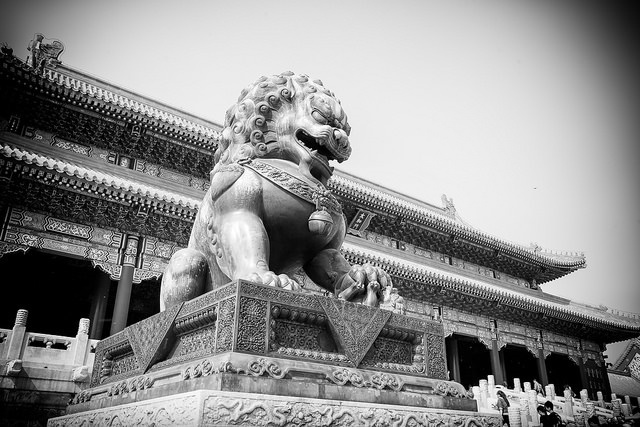 When Prime Minister Abbott addressed the Boao Forum in China in early April, he told his audience that ‘Australia is not in China to do a deal, but to be a friend’. Actually, since he was towing behind him one of the largest business delegations ever to leave Australia, perhaps he should have said Australia is in China not only to do a deal, but to be a friend.
When Prime Minister Abbott addressed the Boao Forum in China in early April, he told his audience that ‘Australia is not in China to do a deal, but to be a friend’. Actually, since he was towing behind him one of the largest business delegations ever to leave Australia, perhaps he should have said Australia is in China not only to do a deal, but to be a friend.
I take the prime minister’s statement as a sign that the Abbott government is determined to build upon the recently-agreed strategic partnership between Australia and China. But if we’re going to do that, then both countries need to speak candidly about their shared and non-shared interests in the strategic field. If our shared interests are thin, so too will be our relationship; if they’re thick, our relationship will similarly be thick. Australia and China have many interests in common, and there’s much more they could do together if they wished. But there’s also a list of topics on which they disagree—and glossing over those doesn’t help.
Let’s start with the interests we share—not the obvious trade interests that arise from our high levels of economic complementarity, but the actual strategic interests. We both want a peaceful Asia, where development can occur and defence budgets are low relative to GDP. We share a strategic interest in Asian prosperity, as a driver for regional unification, and we oppose the formation of separate economic ‘blocs’—because those could quickly harden into opposing strategic blocs. We share a strategic interest in regional non-proliferation, not least because of the prospects for a proliferation ‘cascade’. Similarly, we share a strategic interest in secure sealanes, both our societies being heavily dependent on trade. (Perhaps more than any other factor, it’s that interest which suggests China’s strategic future will be more closely tied to the maritime-dependent world than some believe.) We share a strategic interest in countering Islamic extremism and addressing the concerns raised by the return of foreign fighters from Iraq and Syria. And we share a strategic interest in humanitarian assistance and disaster relief—reflected most recently in our cooperative engagement to search for the missing Malaysian flight, MH 370.
But it’s not all sunshine and puppies. We hold different views about the current regional order, which China sees as hegemonic and we see as stable, liberal and prosperous. We hold different views about future US engagement in the region: Australia sees the US alliances in the region as durable and beneficial; China sees them as the hangovers of an earlier era. We hold different views of the regional role of Japan: China’s more anxious than Australia about Japan returning to play a larger role. And we hold different views about territorial claims: China sees itself as a great power whose own national unification project isn’t yet complete, whereas Australia sees the competing claims of the various claimants in the East China Sea and South China Sea as justiciable (resolvable by international law) but—when pursued by force—disruptive to regional security.
That’s an important set of differences. In relation to future regional order, it’d be nice to get a clearer picture of what China wants. Sometimes Chinese visitors tell us they don’t see why China should be obliged to buy shares in a company where the US is already the CEO and Japan and Australia sit on the board of directors. Fair enough, but that’s just a statement about what China doesn’t want. Is it meant to be a subtle way of telling us that China wants to design its own company? Or would it like a G2 arrangement, whereby it shares that CEO role with the US? A G2 arrangement isn’t likely to fly in Asia: it’d marginalise too many security arrangements that lie at the core of the current order. If China wants to encourage ‘buy-in’ to a conception of the regional order that turns on a larger role for itself, it needs a clearer presentation of what that order would look like, and how it would work to the region’s benefit and not just China’s.
The alliance point is just as serious. The more Chinese representatives travel the region talking about US alliances as a hangover from yesteryear, the more they’ll stir resistance and resentment. In Australia, many strategic analysts agree that ANZUS is a more useful and more functional alliance now than it has ever been before. Far from being in decline, US alliances in the region look likely to last for many years to come.
What does all that mean for the future? The two countries have a healthy list of shared strategic interests, and should be canvassing ways in which they can both contribute—individually and jointly—to the realisation of those. But we also need to understand better through frank dialogue the points on which we disagree, because those are important issues—they go to the heart of the future regional order in Asia, a topic dear to all our hearts.
Rod Lyon is a fellow at ASPI and executive editor of The Strategist. Image courtesy of Flickr user See-ming Lee.

